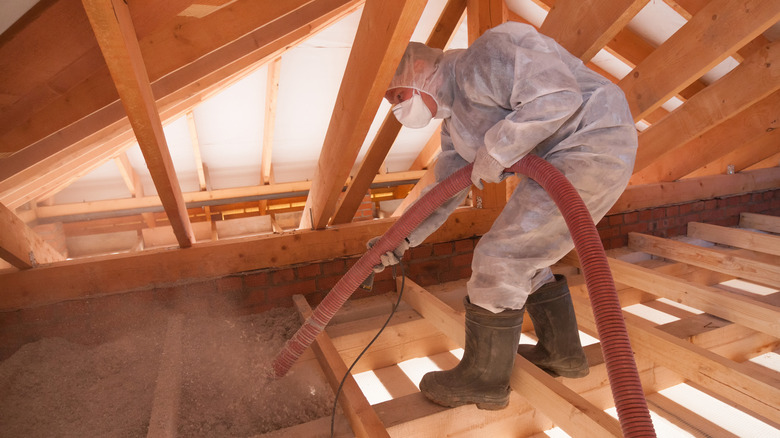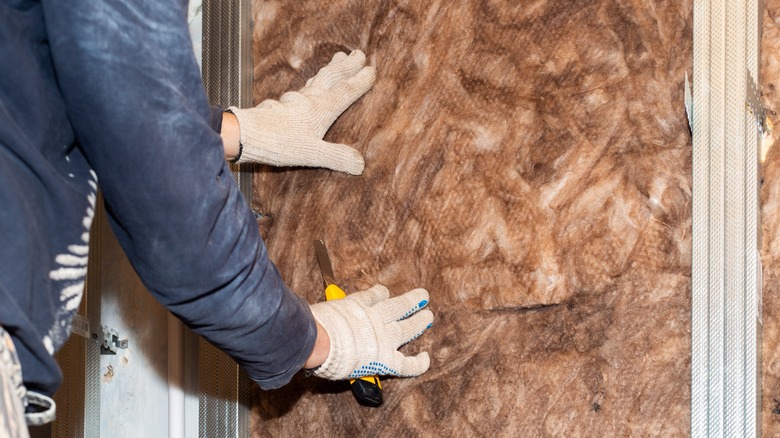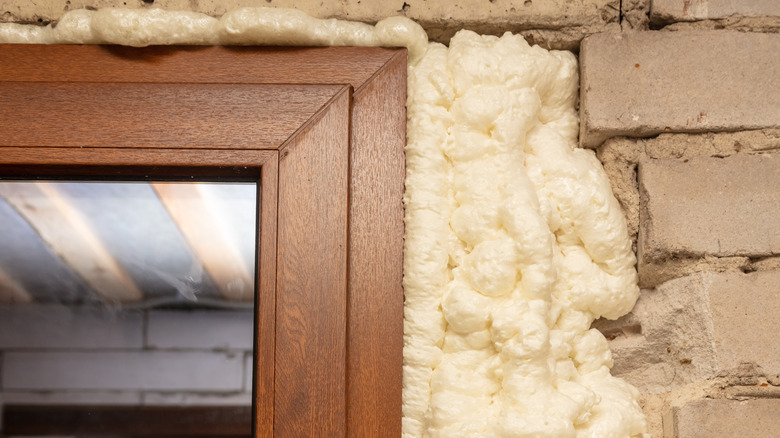How To Determine What Kind Of Insulation Is In Your Walls
We may receive a commission on purchases made from links.
Many people don't think about the insulation in their homes until there is a draft or energy bills start to rise. Proper insulation can help reduce energy loss, ensure floors aren't cold, and prevent ice dams in your roof, according to RetroFoam.
So, what is insulation? Insulation is any type of material used to insulate a building. It's like a blanket placed around the interior structure of the home to keep treated air (cool air in the summer and hot air in the winter) in the space longer. Adding more insulation could reduce the amount of work your home's heating and cooling system has to do to keep you comfortable.
If you are doing a renovation project or thinking about adding more insulation, you may be unsure what type of buy. You can determine what type of insulation you have by learning a bit about the most common types used in residential properties.
Blanket insulation
Blanket insulation in rolls or batts is a common type of insulation. Typically made of fiberglass, mineral, plastic, or natural fibers, it's often found in the foundation walls, ceilings, and floors. This material is typically in a sheet or a roll and looks like a fluffy foam material that's often pink in color. The roll is typically 6 to 12 inches thick, though it may vary.
Blanket insulation is not difficult to place since it sits between the studs in a wall or between the joists of a flooring system. Most often, the installer cuts it to size to create a snug fit in each of these spaces. Typically, it has R-values that range from R-2.9 to R-3.8, depending on the type selected, per Windows on Washington.
According to the U.S. Department of Energy, blanket insulation like this works best in stud and joist spacing that lacks any obstructions, such as vents or piping. That's because it fits easily into these spaces, as long as they are a uniform shape. It's also one of the more affordable options.
Loose fill insulation
If you see loose material in your attic or notice the insulation doesn't seem to have any real form to it, you could have loose fill insulation. This type is typically blown into the space, which means specialized equipment propels insulation into tight corners to fill areas between joists.
Typically used in attics or in areas that are hard to reach or seal, loose fill insulation could be made from a range of materials. This most often is cellulose or fiberglass, but mineral wool is sometimes used as well, according to Home Depot.
You can add more loose fill over existing insulation or remove it to start over. This type of insulation has an R-value that ranges from R-2.2 to R-3.8. It's a moderately affordable product compared to other types of insulation. If you rent the right equipment, you could install it yourself or have a pro do it.
Foam board or spray foam insulation
Foam is a fantastic insulating material. Typically, in homes, there are two types: foam board, which is an inflexible drywall-like board placed against walls, and spray foam, which is sprayed into place much like loose fill insulation.
Foam board, also known as rigid foam, is often found on the outer walls of the home. It comes in sheets of footboards that have various thicknesses. R-values range widely between products. This product provides thermal protection, as well as an air and moisture barrier for the home, according to ECHOtape.
Spray foam insulation is a good option for tight and hard-to-reach areas. Sprayed into the spaces around joists, it quickly dries and hardens, creating a highly protective surface. Its R-value ranges from R-3.7 to R-6.5, depending on the type. It's more expensive than other products, according to Home Depot, but tends to be a good choice for colder areas thanks to its better insulation properties.


